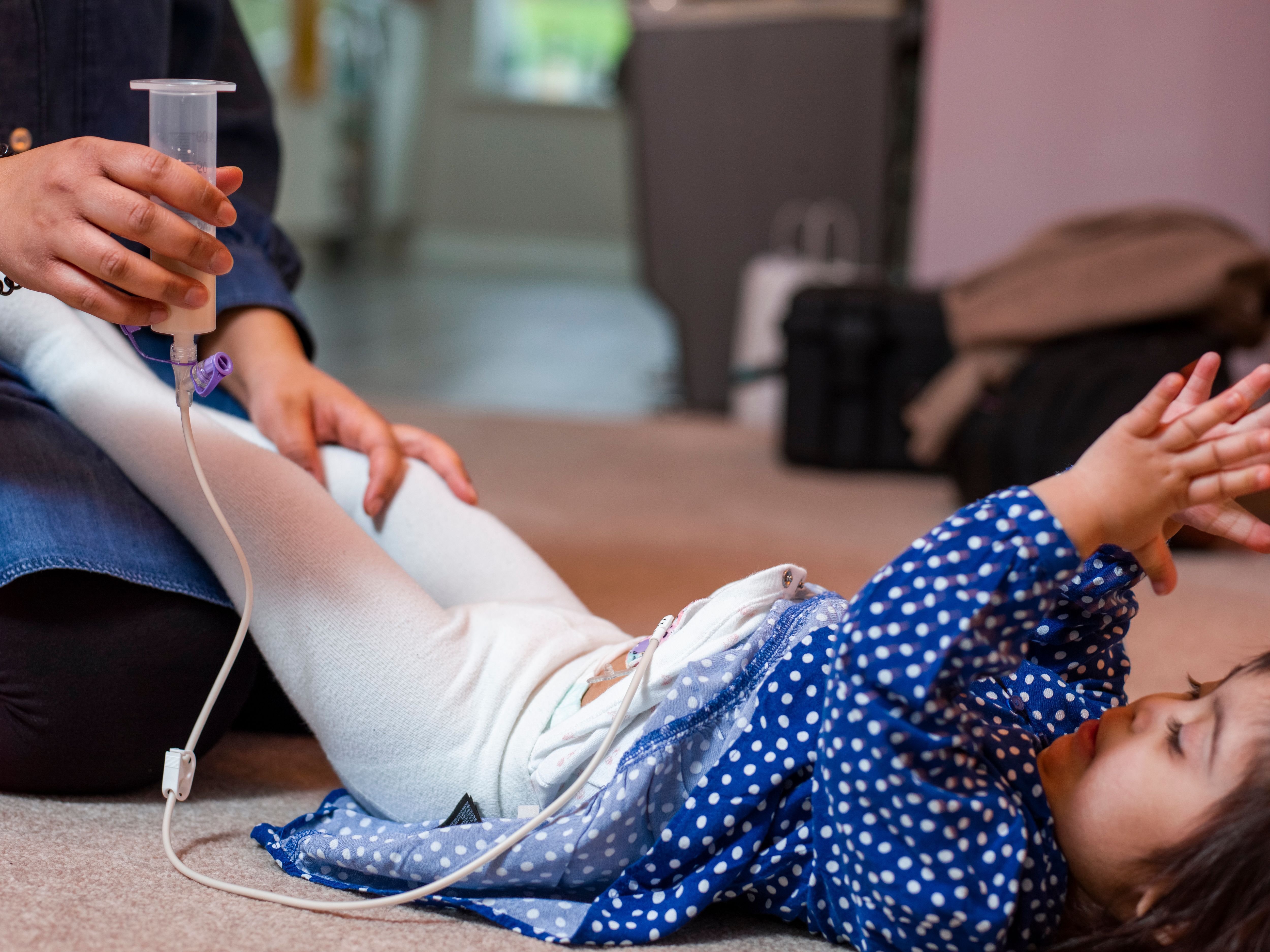- Center on Health Equity & Access
- Clinical
- Health Care Cost
- Health Care Delivery
- Insurance
- Policy
- Technology
- Value-Based Care
Final Readout of FIREFISH Study Showcases Risdiplam’s Pronounced Effects in Spinal Muscular Atrophy
The FIREFISH study showed that most children with type I spinal muscular atrophy (SMA) maintained or improved motor functions and feeding abilities over 5 years when treated with risdiplam.
This article was originally published in NuerologyLive® and has been lightly edited.
At the 2024 Cure SMA Research & Clinical Care Meeting, held June 5-7, in Austin, Texas, data from the open-label extension of the pivotal FIREFISH study (NCT02913482) showed that risdiplam (Evrysdi; Genentech) maintained its effectiveness and safety in patients with type I spinal muscular atrophy (SMA) after 5 years. Considered the final readout of the study, 91% of children treated with the medication were alive at the end of year 5, outpacing historical data by significant margins.1
Risdiplam demonstrated great 5-year efficacy for improving motor functioning and feeding capabilities in children with type I SMA | image credit: Cultura Creative - stock.adobe.com

FIREFISH is a unique 2-part, multi-center study that assessed the safety, tolerability, pharmacokinetics, pharmacodynamics, and efficacy of risdiplam in infants aged 1-7 months with type I SMA. It consisted of a dose-finding part (Part 1; n = 21) and a confirmatory part (Part 2; n = 41) which investigated risdiplam for 24 months at the dose selected in Part 1. Following the 2-year period, patients entered the open-label extension in efforts to further gain clinical insights.
By the end of year 5, 81% of children were alive without permanent ventilation and the majority (59%) were able to sit without support for at least 30 seconds. Risdiplam, an oral, noninvasive small molecule therapy, resulted in maintained or improved motor function abilities, assessed through the Gross Motor Scale of the Bayley Scales of Infant and Toddler Development Third Edition (BSID-III) and the Hammersmith Infant Neurological Examination (HINE-2). Additional results at year 5 showed that 96% of treated patients were able to swallow and 80% were able to feed without a feeding tube.
"This is the final readout of the FIREFISH study, which has provided a wealth of insights and data, helping to firmly establish Evrysdi as an important treatment option, improving the lives of children across the globe living with SMA," Levi Garraway, MD, PhD, chief medical officer and head of Global Product Development at Genentech, said in a statement.1 "This would not have been possible without the commitment and dedication of the children and families who participated, as well as numerous healthcare professionals and patient support organizations to whom we are immensely thankful."
Other notable findings showed that 7 children were able to stand by year 5, 3 with support, 4 unaided, and 6 could walk with support. In addition, the therapy was considered well-tolerated, as no treatment-related adverse events (AEs) forced patients to discontinue treatment or withdraw from the study. Notably, from year 1 to year 5, the overall rate of AEs decreased by 66%.
Throughout the study, the most common AEs were upper respiratory tract infection (64%), pyrexia (64%), and pneumonia (50%). This patient group, which typically has several incurring medical needs, saw a decline in hospitalization rate while on risdiplam, including 22% of patients who did not require hospitalization at all since the start of treatment. Overall, the AEs observed and decrease in hospitalizations over the 5-year period were similar to that observed between the first and fourth 12-month periods.
READ MORE: EU Approves Biogen’s Tofersen as First Treatment for SOD1 ALS
The data presented at this year’s Cure SMA Annual Meeting mirrored what was presented last year, when investigators gave the 4-year update to the study. At that time, many of the babies, now young children, continued to improve their ability to sit, stand, and walk without support. A major of the infants included in the OLE (n = 50) maintained their ability to feed by mouth and swallow up to month 48.2
"These long-term findings confirm the ongoing benefit of Evrysdi for children with Type I SMA,” Giovanni Baranello, MD, PhD, professor of pediatric neuromuscular disorders, UCL Great Ormand Street Institute of Child Health, said in a statement.1 "Children treated with Evrysdi over 5 years have maintained or improved their ability to sit, stand and walk — critical skills for development and daily living. An overwhelming majority also maintained the ability to swallow and to eat without a feeding tube."
Since its approval in 2020, risdiplam has been, or is currently, being assessed in several different trials, including SUNFISH (NCT02908685), JEWELFISH (NCT03032172), RAINBOWFISH (NCT03779334), and MANATEE (NCT05115110). Earlier this year, at the 2024 Muscular Dystrophy Association Clinical and Scientific Conference, investigators presented the outline of a new phase 4 study, dubbed Marlin, that will assess fertility-related outcomes in adult males with SMA on risdiplam. Marlin will primarily assess whether adults males with SMA exposed to risdiplam can conceive, while exploratory end points include characterization of confounding factors that may impact fertility, fertility-related healthcare resource utilization, management and fertility treatment decisions, and pregnancy outcomes.3
REFERENCES
1. Five-Year Data for Genentech’s Evrysdi Show the Majority of Treated Children With a Severe Form of Spinal Muscular Atrophy (SMA) Achieved or Maintained the Ability to Sit, Stand or Walk. News release. Genentech. June 7, 2024. Accessed June 10, 2024. https://www.gene.com/media/press-releases/15027/2024-06-07/five-year-data-for-genentechs-evrysdi-sh
2. Four-year follow-up data for Genentech’s Evrysdi show continued increase in number of children with a severe form of spinal muscular atrophy (SMA) able to sit, stand and walk. News release. June 30, 2023. Accessed June 10, 2024. https://www.biospace.com/article/releases/four-year-follow-up-data-for-genentech-s-evrysdi-show-continued-increase-in-number-of-children-with-a-severe-form-of-spinal-muscular-atrophy-sma-able-to-sit-stand-and-walk/
3. Dickendesher T, Bar-Chama N, Fulton GW, et al. Observational study of fertility in risdiplam-treated adult male patients with spinal muscular atropy (SMA). Presented at: MDA Clinical and Scientific Conference; March 3-6, 2024; Orlando, FL. POSTER T392
